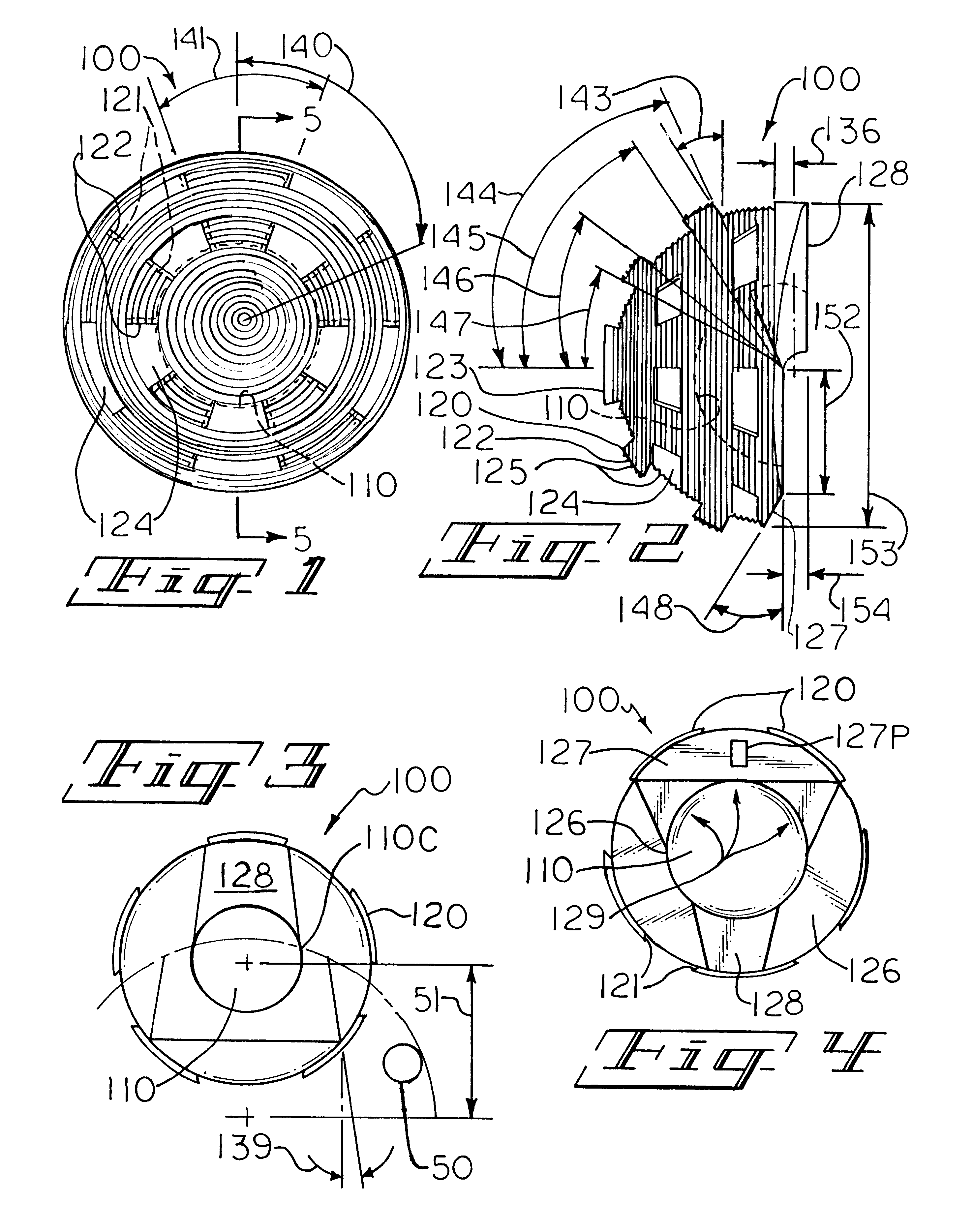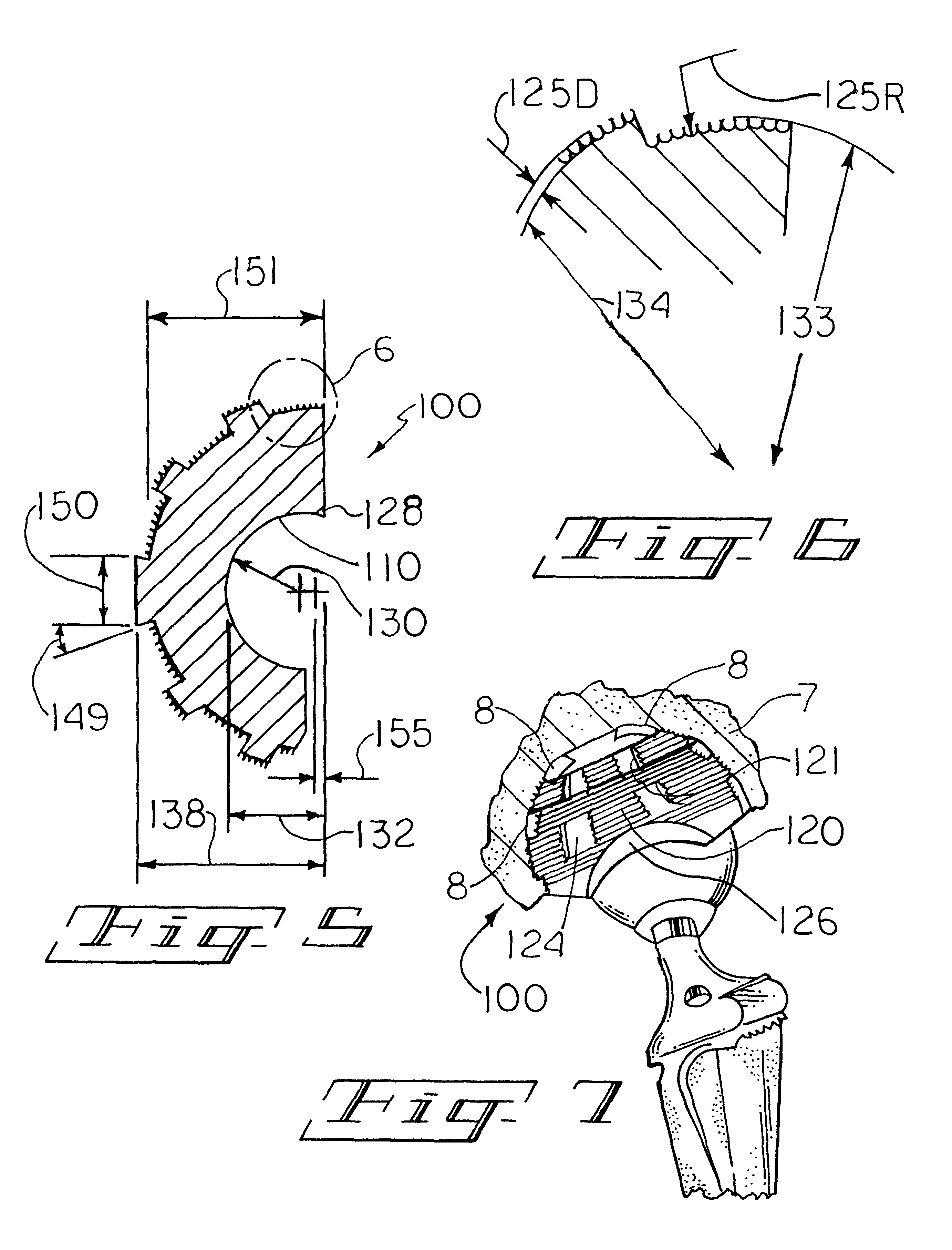Snap-fitting, non-dislocating hip joint socket implant
a hip joint socket, non-dislocation technology, applied in the field of single-piece, monolithic plastic enarthrodial type joint socket implants, can solve the problems of reduced overall depth of the prosthetic head-contraint socket, unable to ensure a maximally efficient unable to ensure maximum implant-stabilizing bone-to-prosthesis cement mantle, etc., to prolong the life of the a
- Summary
- Abstract
- Description
- Claims
- Application Information
AI Technical Summary
Benefits of technology
Problems solved by technology
Method used
Image
Examples
Embodiment Construction
The invention can be further understood by the present detail which may be read in view of the drawings. The same is to be taken in in an illustrative and not necessarily limiting sense.
Although the joint of interest may be another enarthrodial joint, the invention is described primarily with respect to and preferably is the hip. For example, the joint of concern may be the human hip joint.
With reference to the drawings, features generally common to socket implants of the invention 100 (FIGS. 1-9) for a total conventional hip replacement, which may be referred to as a head-receiving socket implant cup 100 include supporting body 101, and articular surface 110 which is smooth, and a cementable, mountable back surface 120. The articular surface 110, when the cup 100 is suitably mounted in suitable receiving stock such as human cotyloid cavity bone 7 such as by cementing with a methacrylate surgical cement 8, mates in articulating, gliding contact with the smooth external surface the f...
PUM
 Login to View More
Login to View More Abstract
Description
Claims
Application Information
 Login to View More
Login to View More - R&D
- Intellectual Property
- Life Sciences
- Materials
- Tech Scout
- Unparalleled Data Quality
- Higher Quality Content
- 60% Fewer Hallucinations
Browse by: Latest US Patents, China's latest patents, Technical Efficacy Thesaurus, Application Domain, Technology Topic, Popular Technical Reports.
© 2025 PatSnap. All rights reserved.Legal|Privacy policy|Modern Slavery Act Transparency Statement|Sitemap|About US| Contact US: help@patsnap.com



